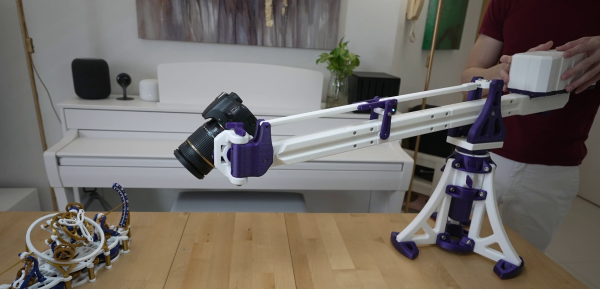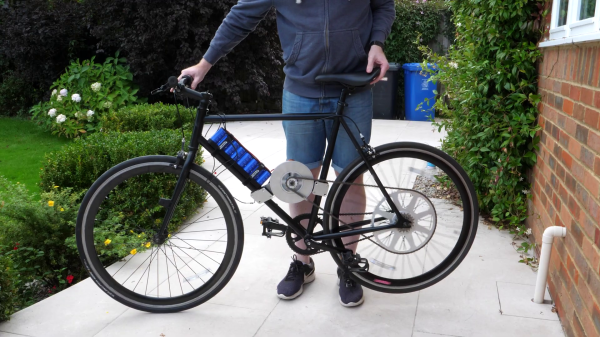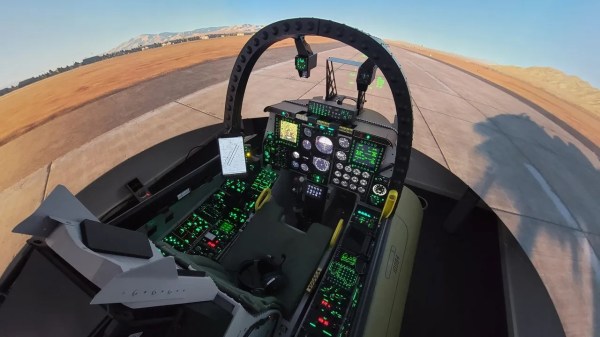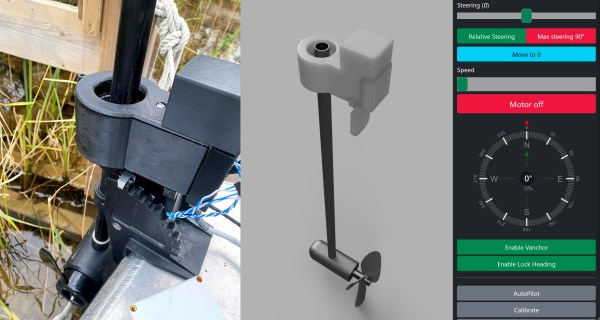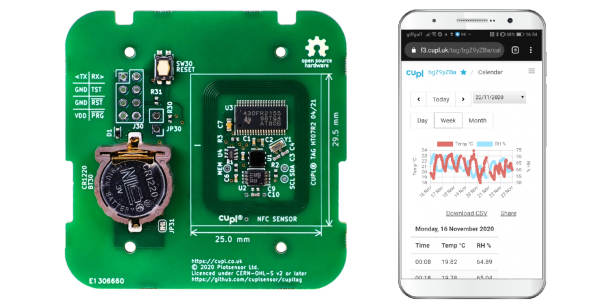If you’ve ever tried to document a project on your workbench with photos or videos, you know the challenge of constantly moving tripods to get the right shot. [Mechanistic] is familiar with this frustration, so he built a small desktop camera crane.
Heavily inspired by [Ivan Miranda]’s large camera crane, this build scales it down and mainly uses 3D printed parts. The arm of the crane can pivot along two axes around the base, uses a parallel bar mechanism to keep the camera orientation constant through its vertical range of motion. The camera mount itself allows an additional 3 degrees of freedom to capture any angle and can mount a DSLR or smartphone. To offset the weight of the camera, an adjustable counterweight is added to the rear of the arm. Every axis of rotation can be locked using thumbscrews.
We can certainly see a crane like this being useful on our workbench for more than just camera work. You could create attachments for holding lights, displays, multimeters, or some helping hands. For some tips on creating an engaging project video check out [Lewin Day]’s excellent video on the subject.

